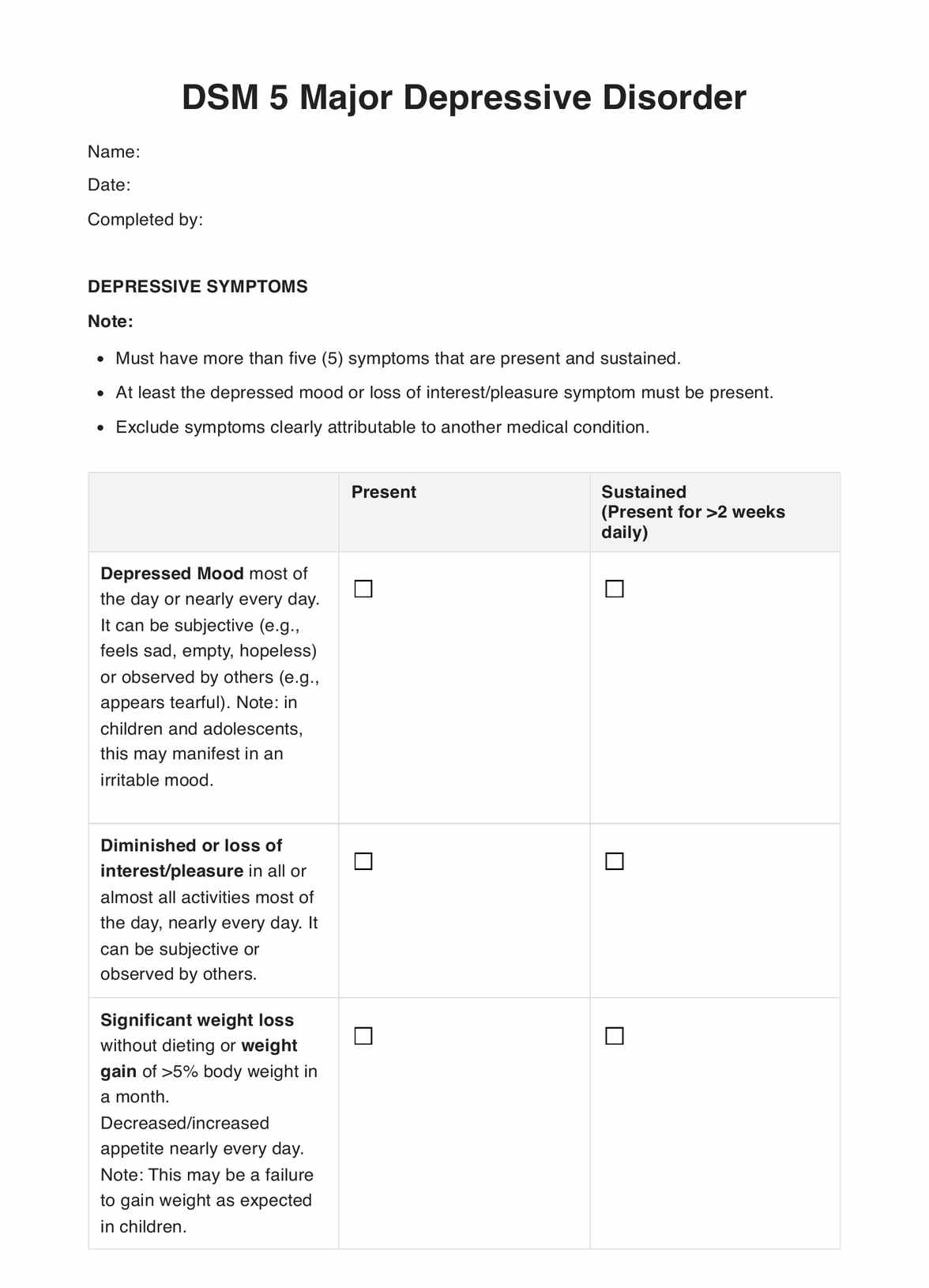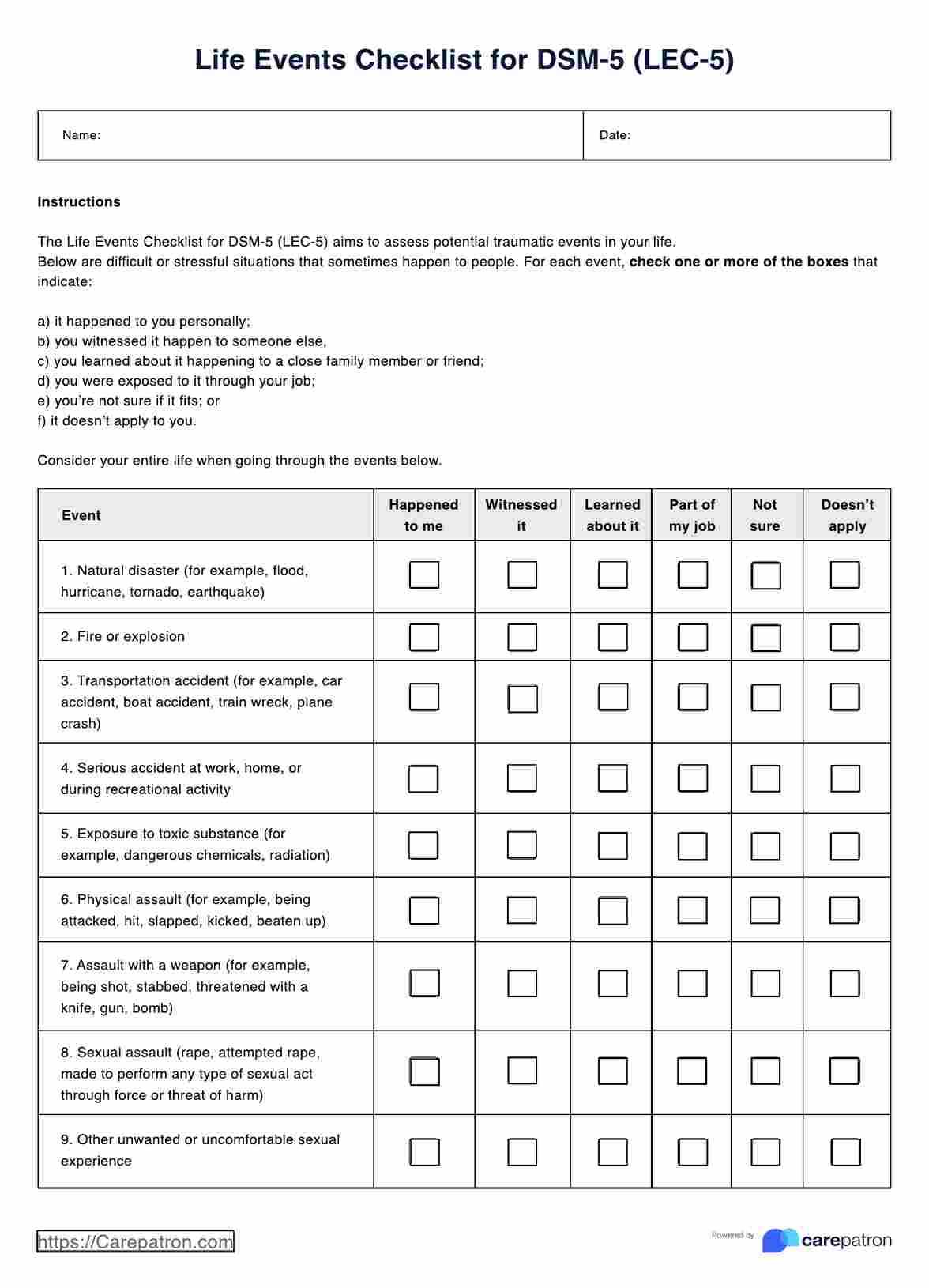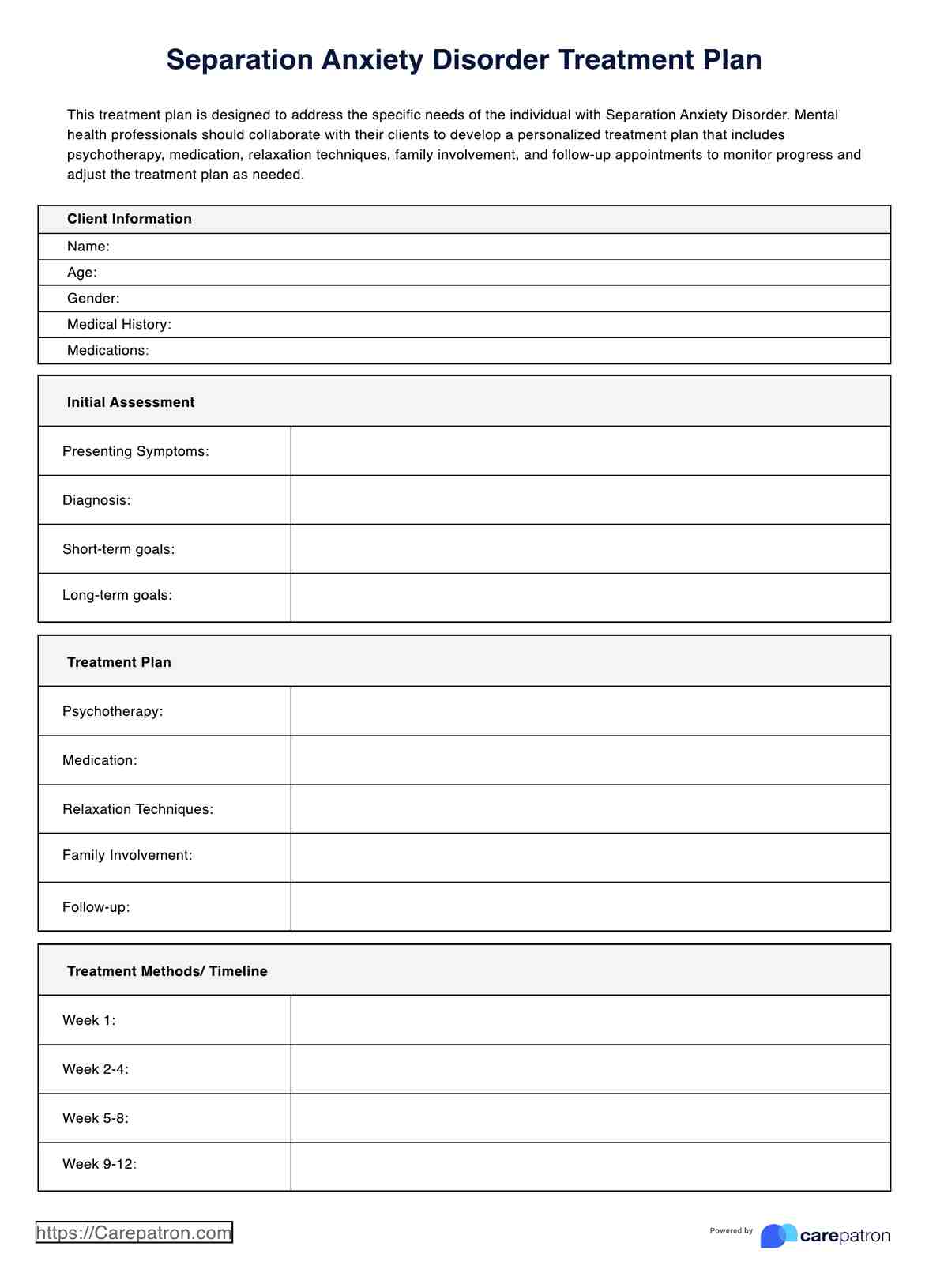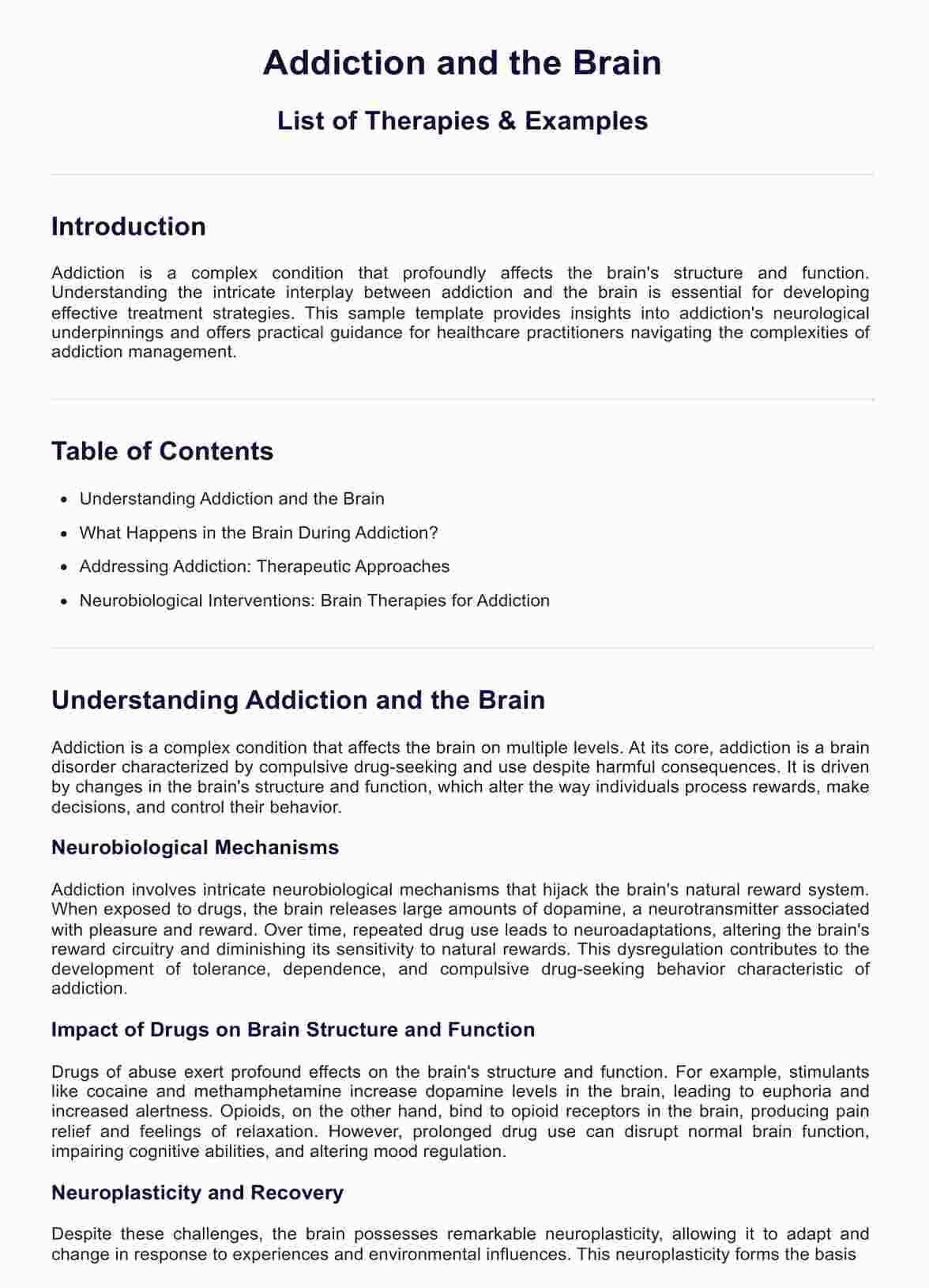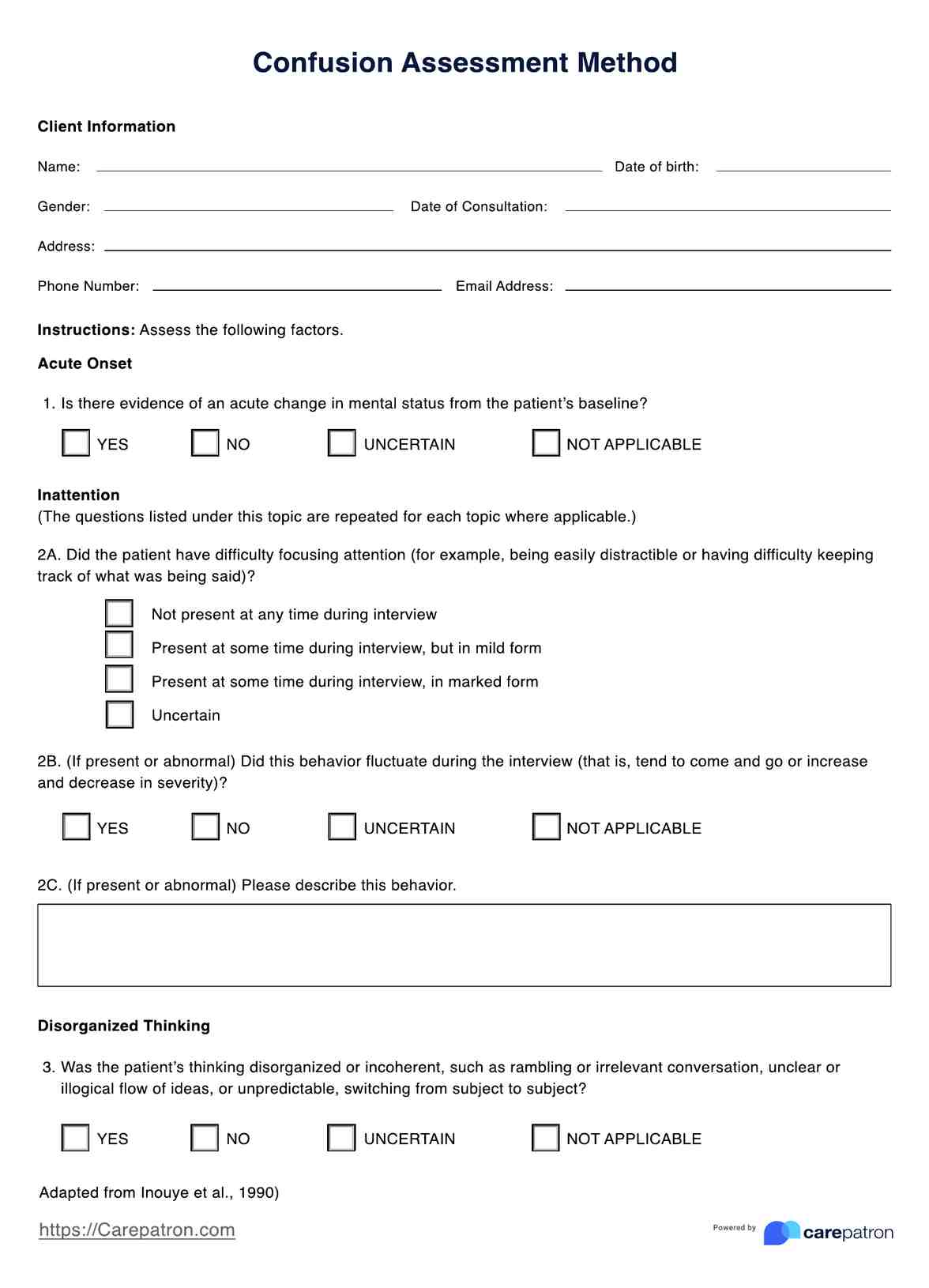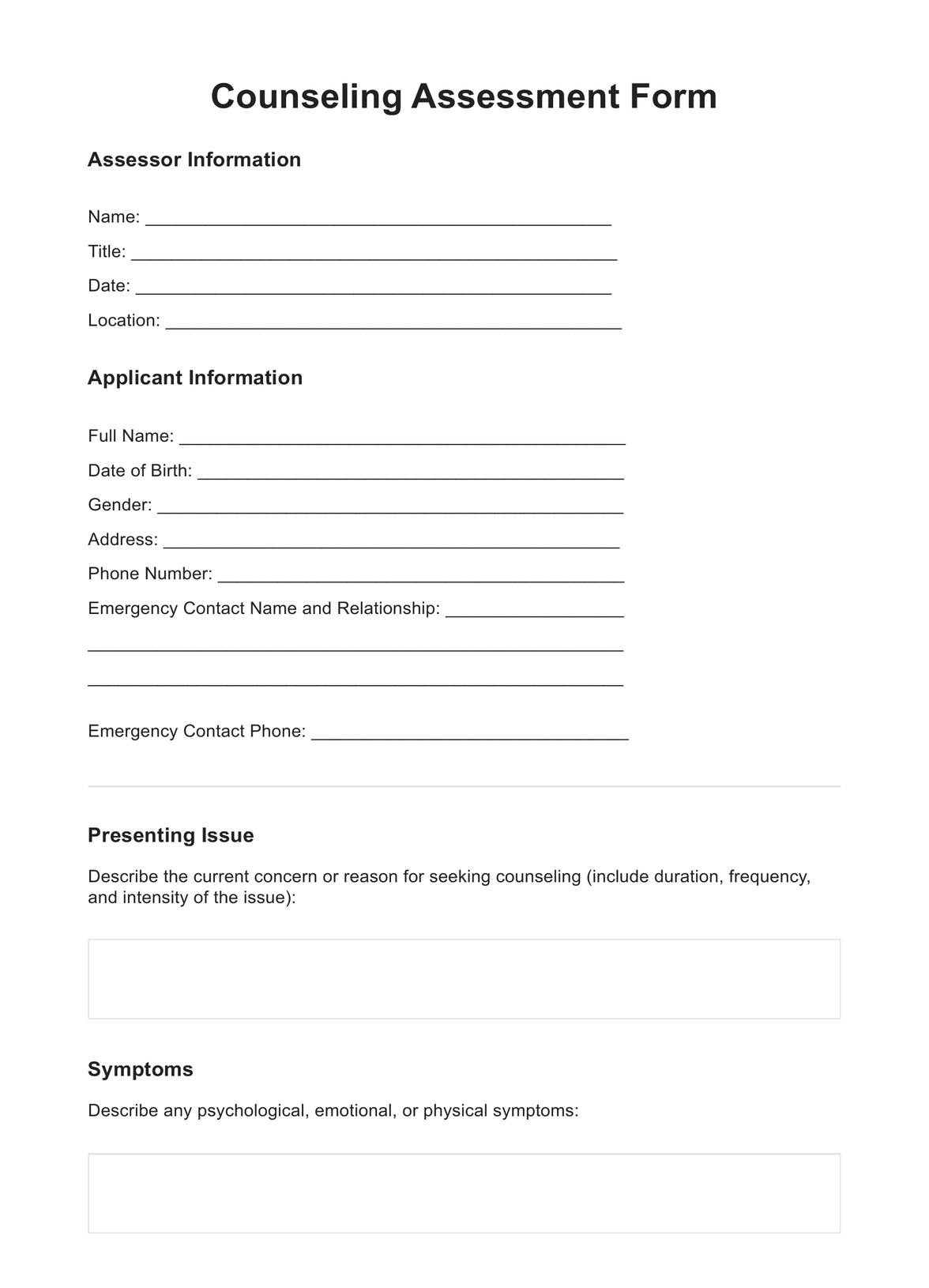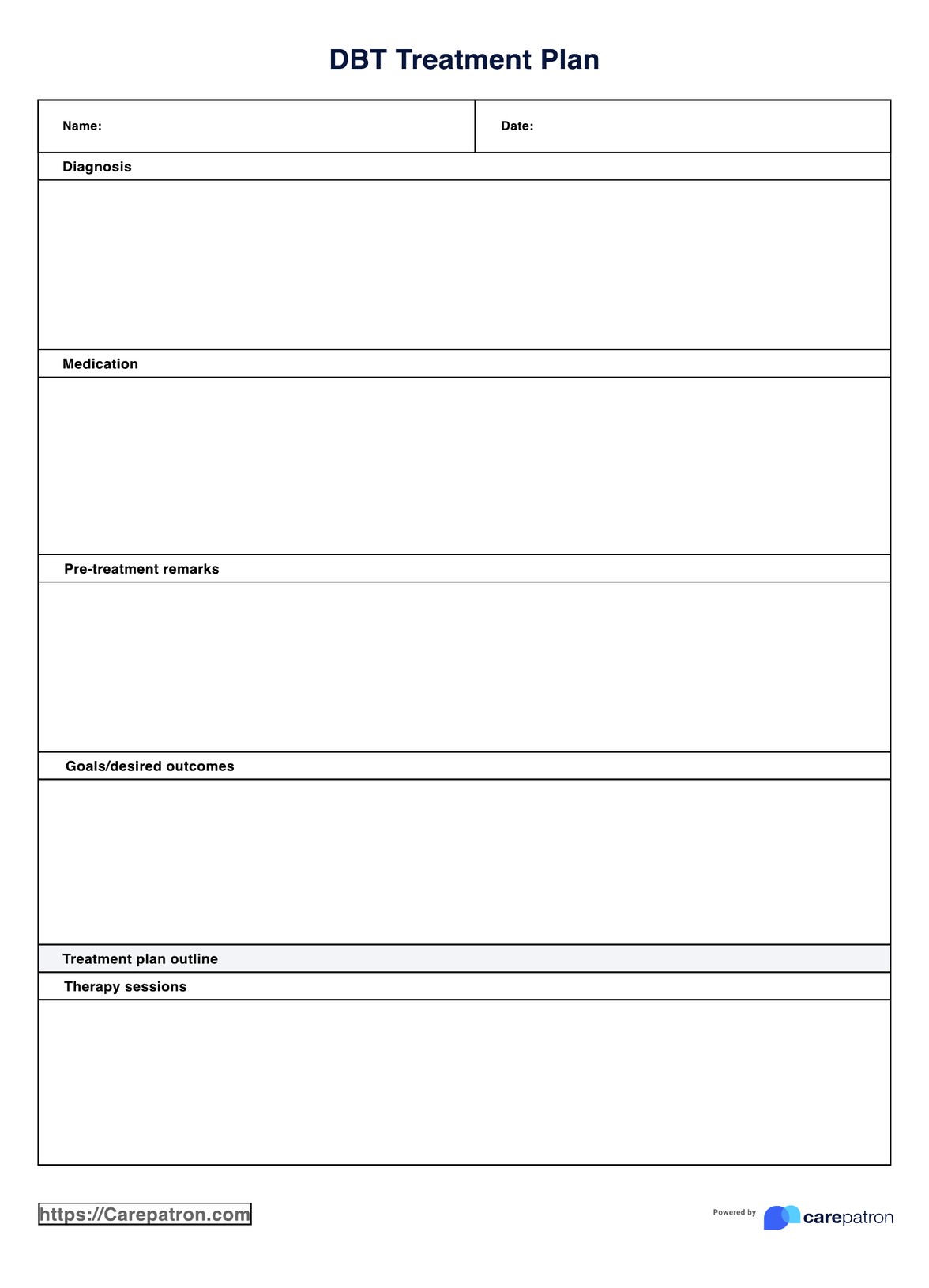CRAFFT Questionnaires
Discover the utility of the CRAFFT Questionnaire for adolescent substance use screening. Get your free PDF and learn how Carepatron can simplify the process.


What is a CRAFFT Questionnaire?
The world of mental health is filled with powerful tools and resources designed to help practitioners understand and support their clients. One such resource is the quick, efficient, and validated method to screen adolescents for a high-risk substance use disorder.
The name 'CRAFFT' is an acronym, each letter representing a key question related to potential substance misuse: Car, Relax, Alone, Forget, Friends, Trouble. Each question digs deep into the young person's experiences and behaviors, looking for signs of harmful alcohol and drug use.
The power of the CRAFFT Questionnaire lies in its simplicity and specificity. It takes only a few minutes to complete, making it a highly feasible screening tool in busy healthcare settings. Yet, despite its brevity, it effectively identifies adolescents who may have severe substance-related issues and need further assessment.
This guide will provide a brief discussion detailed overview of the CRAFFT Questionnaire, explaining how to use it, why it's essential, and when it can be most beneficial. Whether you're a seasoned practitioner or new to the mental health field, this guide will help you maximize this CRAFFT screening tool to serve your clients better.
Along with the guide, we're offering a Free PDF Download of the CRAFFT Questionnaire for direct implementation into your practice. The path to understanding and supporting your clients begins here.
CRAFFT Questionnaires Template
CRAFFT Questionnaires Example
How does it work?
Navigating the CRAFFT Questionnaire may initially seem daunting, but it is pretty straightforward. Below, we will take you through each step of how a healthcare professional can efficiently administer this valuable assessment to patients.
Step 1: Introduction
Explain to the patient that this questionnaire aims to screen for potential substance misuse. Ensuring the patient understands that their responses will be kept strictly confidential and that honesty is critical for an accurate evaluation is essential.
Step 2: Questionnaire administration
Hand the patient the questionnaire and ask them to fill out each question honestly and to the best of their ability. It's essential to clarify any uncertainties they may have about the questions to avoid any misunderstandings.
Step 3: Analysis of part A responses
After the patient has completed the questionnaire, start by analyzing their answers to the questions in Part A. These answers will provide insight into the frequency of potential substance use in the past 12 months.
Step 4: Analysis of part B responses
If the patient answered '0' for all questions in Part A, only the 'CAR' question needs to be asked from Part B. However, if the patient mentioned substance use, all six CRAFFT questions from Part B must be asked. These questions will give a clinician a clearer picture of the patient's behaviors and experiences related to substance use.
Step 5: Interpretation of results
Finally, interpret the results. If the patient answers 'Yes' to two or more questions in Part B, it suggests a serious problem and a need for further assessment.
Though it may seem rigorous, this comprehensive screening process is essential in identifying potential high-risk behaviors and seeking necessary help for the patient. Through this guide, we hope healthcare professionals feel more equipped and confident to administer the CRAFFT Questionnaire. Should you want further confirmation or evaluation, you are free to explore and utilize other quick drug and brief alcohol screening tests such as the AUDIT and breath, saliva, or blood test.
When would you use this CRAFFT questionnaire?
The CRAFFT Questionnaire is invaluable for practitioners working with adolescents, particularly those in mental and adolescent behavioral health research and substance use disorders. Below are some specific instances when using this questionnaire would be appropriate.
- Initial assessment: One of the critical times to use the CRAFFT questionnaire is during an initial evaluation of a young patient. It can serve as a baseline for understanding their substance use habits and patterns, uncovering areas of concern that may require further exploration.
- Regular check-ups: Including the CRAFFT questionnaire as part of routine check-ups can provide ongoing monitoring of a young person's substance use. This helps identify any changes in their behavior and can prompt further intervention if necessary.
- Follow-up sessions: After a diagnosis or intervention, the CRAFFT questionnaire can be used to monitor a young person's progress and the effectiveness of the intervention. Regular administration can help track changes and adjust treatment plans as necessary.
- Special situations: The questionnaire can also be helpful in situations with suspicion or evidence of substance misuse. These may include instances of school truancy, legal issues, or significant changes in behavior or mood.
In conclusion, the CRAFFT questionnaire is a versatile tool used across various settings to screen for potential substance misuse in young people.
By integrating this tool into regular practice, healthcare professionals can help adolescents navigate their path to healthier lifestyles. It's all about opening the conversation, identifying risks, and taking necessary action.
Benefits of using the CRAFFT Questionnaire
Efficient and time-saving
The CRAFFT Questionnaire's design enables quick screening, providing a snapshot of a young person's substance use in a few minutes. This efficiency makes it a valuable tool for busy healthcare environments.
Evidence-based
Developed based on extensive research and evidence, the CRAFFT questionnaire has proven reliability and validity. It is endorsed by healthcare organizations worldwide for its effectiveness in identifying substance-related issues among adolescents.
Easy to understand
The questionnaire's language is straightforward, making it easy for young people to comprehend and answer the questions honestly and accurately.
Facilitates early intervention
The CRAFFT questionnaire can identify potential issues early, allowing healthcare professionals to intervene promptly. Early intervention can significantly improve outcomes for young people with substance use disorders.
Supports monitoring and evaluation
The questionnaire is an effective tool for monitoring changes in substance use over time, allowing adjustments to be made to treatment plans as necessary.
Research & evidence
The CRAFFT Questionnaire is steeped in research and evidence, supporting its effectiveness and use as a screening tool for adolescent substance use. The tool was developed by Dr. John R. Knight and his team at Boston Children's Hospital's Center for Adolescent Substance Abuse Research. It was named "CRAFFT," an acronym derived from keywords in the questionnaire's six items.
Several research studies have supported its use, demonstrating its effectiveness in identifying adolescent substance use disorders. For instance, a 2012 study published in "Pediatrics" found that the CRAFFT Questionnaire effectively identified adolescents at risk for developing substance use disorders.
Moreover, a systematic review of the questionnaire's validity and reliability in the "Journal of Substance Abuse Treatment" confirmed its ability to detect substance abuse in various populations, enhancing its generalizability.
The CRAFFT Questionnaire's credibility is further enhanced by its endorsement by major medical institutions and organizations, including the American Academy of Pediatrics and the Substance Abuse and Mental Health Services Administration (SAMHSA).
The CRAFFT Questionnaire is a robust, research-backed tool essential to adolescent substance use screening due to its ease of use, efficiency, and proven validity and reliability. It continues to be widely used and researched, further adding to the evidence supporting its utility in healthcare settings.
References
Knight JR, Sherritt L, Shrier LA, Harris SK, Chang G. Validity of the CRAFFT substance abuse screening test among adolescent clinic patients. Arch Pediatr Adolesc Med. 2002;156(6):607-614.
Mitchell SG, Kelly SM, Gryczynski J, et al. The CRAFFT cut-points and DSM-5 criteria for alcohol and other drugs: a re-evaluation and re-examination. Subst Abus. 2014;35(4):376-380.
Commonly asked questions
The CRAFFT questionnaire is designed for adolescents aged 12 to 18 years. It's a valuable tool for screening this population's substance use and related risks.
This largely depends on the individual patient and their circumstances. However, regular administration is beneficial for tracking changes in substance use over time.
Yes, Carepatron is designed to be user-friendly for anyone involved in mental health care. This includes caregivers, family members, and patients themselves.


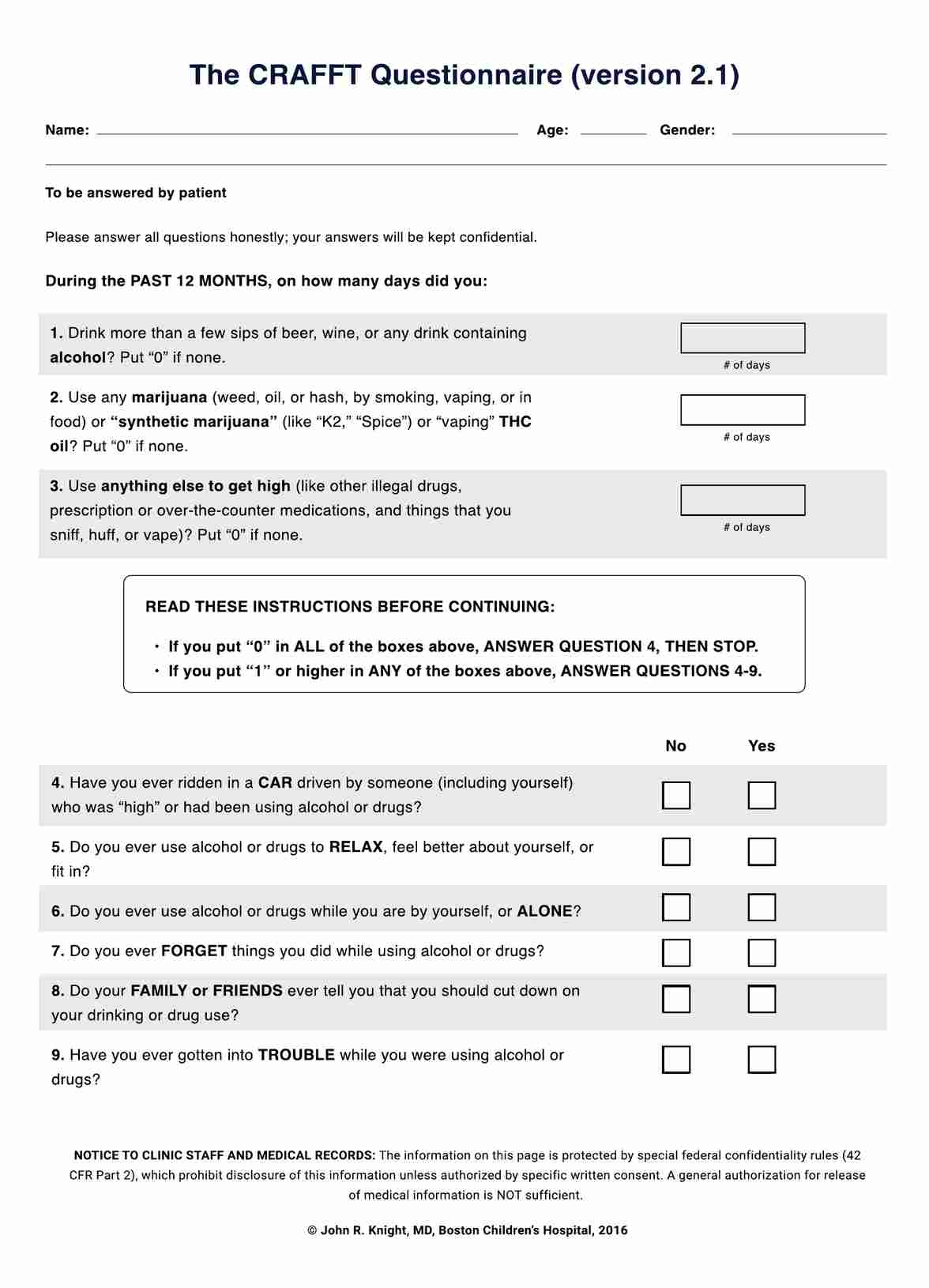
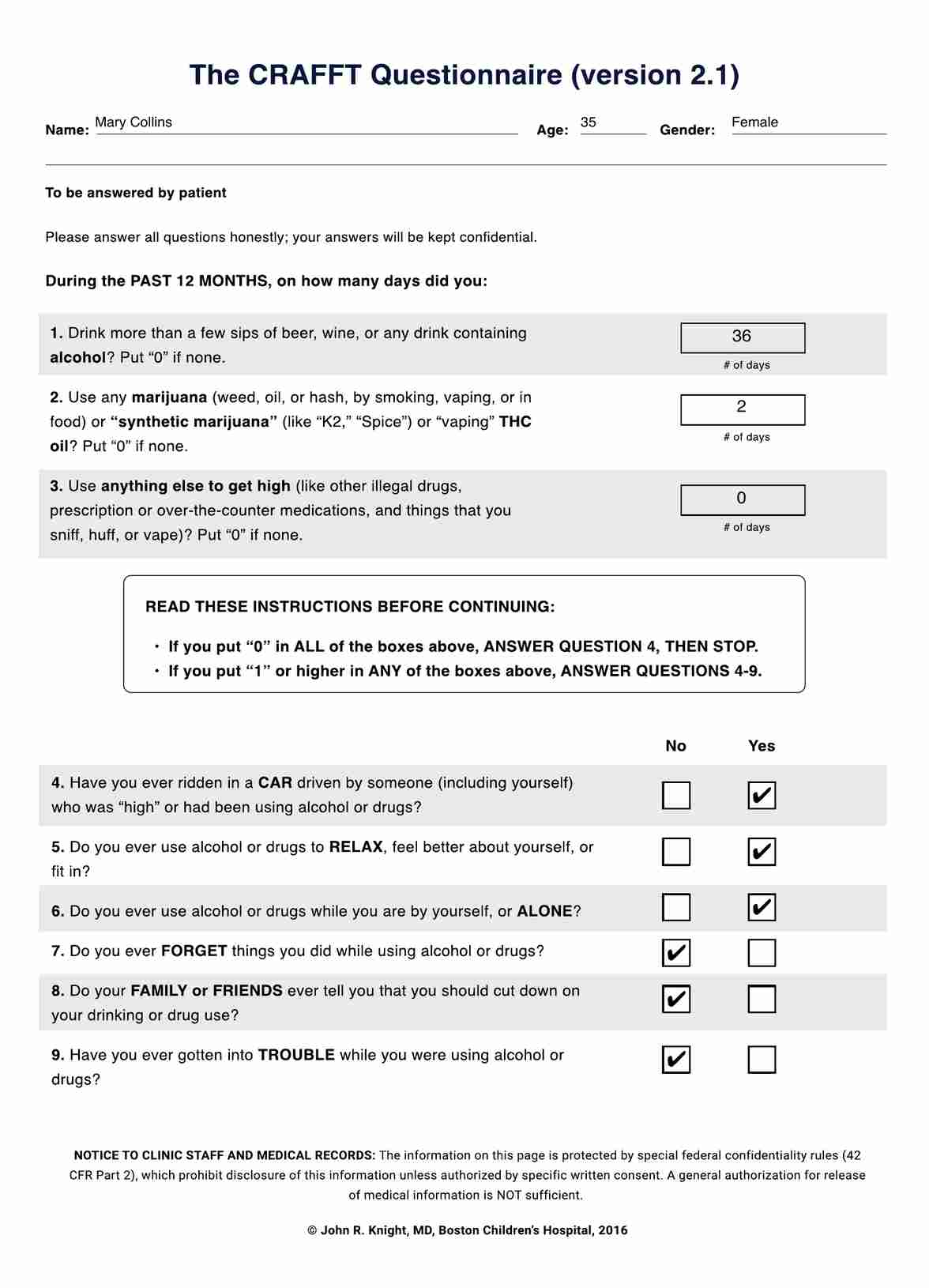

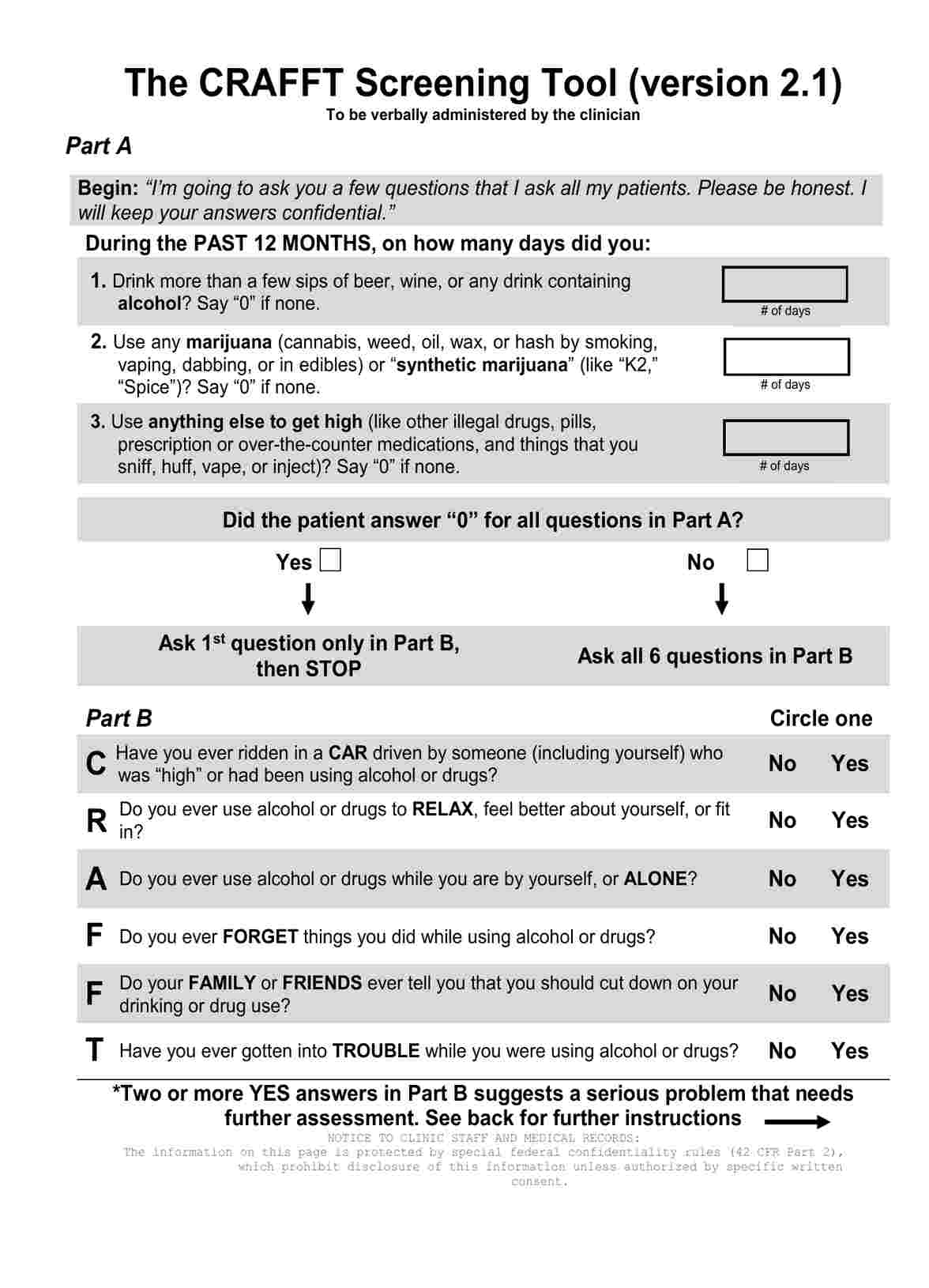













-template.jpg)






















































































